Haldane Prize
The Functional Ecology JBS Haldane Early Career Researcher Award is given is given each year to the best paper in the journal from an early career author. In the absence of extenuating circumstances, ‘early career’ is defined as less than 5 years post- Ph.D. or -D.Phil. experience according to the date of your graduation certificate. The winner of the Haldane early career researcher award will receive £500, membership of the BES, a year’s subscription to Functional Ecology, and a contribution to the costs incurred in attending the BES Annual Meeting in the UK if they wish to give a presentation on their work. The winner is selected by the Editors of Functional Ecology at the end of each year and an announcement is made early in the New Year following.
If the first author of a paper considers that they are eligible for this award they are invited to nominate themselves during the submission process of Manuscript Central.
Winner of the Haldane Prize 2023

Indra Boving
Live fuel moisture and water potential exhibit differing relationships with leaf-level flammability thresholds
Indra Boving, Joe Celebrezze, Ryan Salladay, Aaron Ramirez, Leander D. L. Anderegg, Max Moritz
Funct. Ecol. 2023; 37(11) 2770-2785
Wildfires are a major concern in many ecosystems and frequent strong droughts are expected to increase wildfire risk in future. As the spread and severity of wildfires depend largely upon the flammability of the vegetation, plant hydration is important for predicting fire behaviour and impact. Plant hydration status therefore links wildfire risk to plant drought stress.
The winner of this year’s Haldane Prize – Indra Boving – tested relationships between flammability metrics and plant drought-response traits. Indra’s research found that ignitability and combustibility increased below specific hydration levels that were related to the turgor loss point. These results demonstrate that drought response traits at the tissue level can explain landscape-level flammability thresholds. Crucially, the study establishes fundamental links between plant ecophysiology and fire behaviour to reveal trait-based mechanisms underpinning landscape-scale wildfire patterns. As such, the paper has the potential to substantially advance the field of pyro-ecology, making it an excellent example of the kind of papers Functional Ecology seeks to publish.
Read Indra’s blogpost about the research here.
Winner of the Haldane Prize 2022
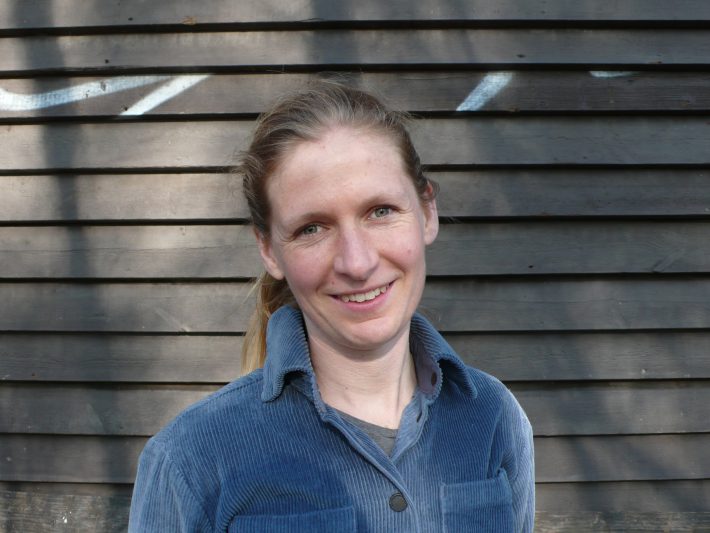
Aya Permin
High nitrogen-fixing rates associated with ground-covering mosses in a tropical mountain cloud forest will decrease drastically in a future climate
Aya Permin, Aline B. Horwath, Daniel B. Metcalfe, Anders Priemé, Kathrin Rousk (Functional Ecology. 2022;1365-2435.14088)
Nitrogen is a critical nutrient for plant productivity and growth in many ecosystems worldwide. However, nitrogen availability is often limited, which has led to the evolution of mutualistic partnerships between certain plants and nitrogen-fixing bacteria. These bacteria can convert nitrogen gas from the atmosphere into plant-assimilable forms, thereby enhancing plant growth and productivity. Despite the importance of nitrogen fixation, the role of bryophytes—such as mosses and liverworts—in ecosystem nitrogen cycling has been largely enigmatic.
Fortunately, this year’s winner of Functional Ecology’s Haldane Prize, Aya Permin, has shed new light on the significance of bryophyte-mediated nitrogen fixation in tropical mountain cloud forests. Aya’s research measured the nitrogen fixation rates of a range of Peruvian ground-covering mosses and liverworts. Surprisingly, she found the nitrogen fixation rates to be relatively high, with wide variation in nitrogen fixation capabilities across the species tested. In fact, the amounts fixed by tropical mountain cloud forest bryophytes were comparable to the amount contributed by other major nitrogen input pathways in these ecosystems, such as N deposition. Aya’s investigation also examined the potential future role of bryophyte nitrogen fixation in tropical mountain cloud forests under predicted environmental conditions. While temperature did not have a significant impact, moisture was found to be a critical factor, with drier conditions leading to lower rates of nitrogen fixation in the bryophytes tested.
These findings emphasize the underappreciated yet significant role of bryophyte-mediated nitrogen fixation in tropical mountain cloud forest ecosystems, with it being at least equivalent to that of mosses in boreal systems. Furthermore, Aya’s investigation suggests that the nitrogen contributions via biological nitrogen fixation by bryophytes to ecosystem nitrogen cycling in the future are likely to decline as precipitation decreases. This decline may have wider downstream impacts on ecosystem productivity and soil carbon sequestration.
Overall, Aya’s research highlights the importance of bryophytes and biological nitrogen fixation to wider nutrient and carbon cycling. It also underscores the need for further research into the underappreciated roles of bryophytes in tropical mountain cloud forest and other wet forest ecosystems. Such research could inform conservation and management efforts aimed at preserving these critical ecosystems in the face of future environmental change.
Read Aya’s blogpost about the research here.
Winner of the Haldane Prize 2021
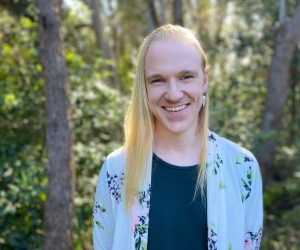
Max Mallen-Cooper
Tissue chemistry of biocrust species along an aridity gradient and comparison to vascular plant leaves
Mallen-Cooper M., Cornwell W.K.
Funct. Ecol. 2021; 35(11) 2604-2614. https://doi.org/10.1111/1365-2435.13903
Biocrusts—complex-yet-diminutive communities of lichens, bryophytes and microbes—form a critical part of many ecosystems including tundra and drylands. They are often overlooked in terms of their contributions to local, regional, and global carbon and nutrient cycling, and are often omitted from ecosystem models. This is usually due to the fact their contributions to these crucial Earth processes are deemed negligible when compared to those of neighbouring vascular plants.
The winner of this year’s Haldane Prize, Max Mallen-Cooper, investigated the often-overlooked contributions of biocrusts to ecosystem function. They sampled and quantified the tissue chemistry of biocrust taxa—including liverworts, mosses and lichens—spanning a 500 km aridity gradient across Australian drylands, and compared it to neighbouring vascular plant leaf traits. Remarkably, Max found that the tissue chemistries of the biocrust species and vascular plant leaves were similar, lending new support to the idea that, functionally, biocrusts can be effectively considered as a single layer of leaf covering the soil surface. This is an important step forward in our understanding and appreciation of the role of biocrust taxa in carbon and nutrient cycling and storage, giving new insight into a historically over-looked component of ecosystem function.
By sampling along an aridity gradient, Max was also able to determine how biocrust C:N ratios were affected by a changing environment. They found that biocrust C:N declined with increasing aridity and that this was likely driven by C shortage relating to their inability to regulate water loss and maintain photosynthesis in dry conditions. This contrasted with vascular leaves whose C:N decline with increasing aridity was instead driven by increasing N; likely a result of photosynthetic changes relating to trade-offs in regulation of water-use. This key functional difference in response to changing aridity between biocrust taxa and vascular plant leaves further underlines the importance of the diverse assemblages of tiny organisms that make up biocrusts, their critical role in ecosystem carbon and nutrient dynamics, and highlights their sensitivity and vulnerability to the effects of future climate change.
Read Max’s blog on the inspiration behind the paper here.
Winner of the Haldane Prize 2020
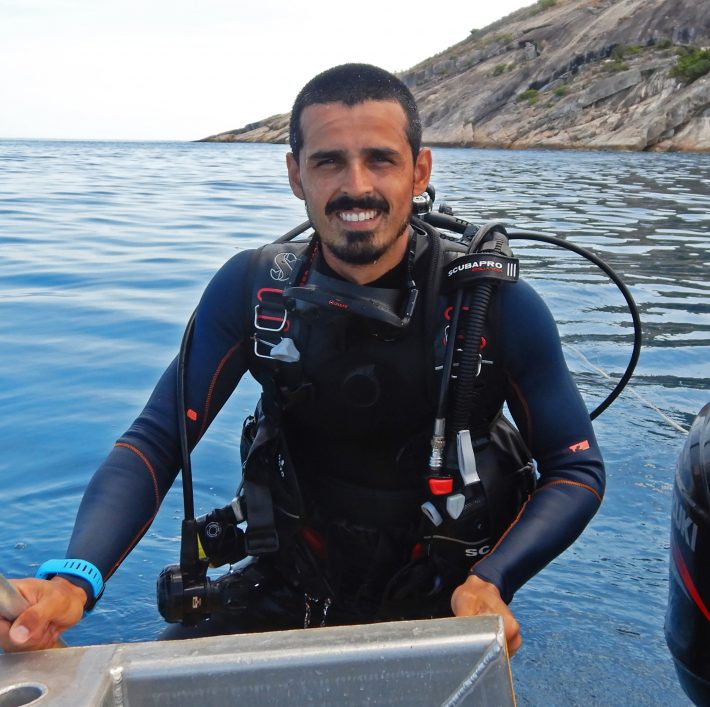
Renato Morais
Severe coral loss shifts energetic dynamics on a coral reef
Morais, R.A.; Depczynski, M.; Fulton, C.; Marnane, M.; Narvaez, P.; Huertas, V.; Brandl, S. J.; Bellwood D. R.
Funct Ecol. 2020; 34: 1507-1518. https://doi.org/10.1111/1365-2435.13568
Everything is connected, and one of the main challenges in ecology is to determine how different components of an ecosystem interact. This is particularly relevant in areas with high biodiversity, where underlying patterns of interactions ultimately shape the dynamics and persistence of these highly complex ecosystems.
In this year’s Haldane prize, Functional Ecology selected a study by Renato Morais and colleagues (Morais et al. 2020) that studies this problem in detail, by quantifying how patterns of energy flow and storage in a coral reef affect the production of consumer biomass (i.e. fish). With this purpose, they compared the community of corals, turf and fish obtained from surveys roughly 15 years apart, during a period with major events of coral degradation, and estimated how patterns of abundance and biomass changed. Then, they combined this information with data on somatic growth and mortality rates to quantify how standing biomass, productivity and consumed biomass rates changed with coral degradation in this system.
Their analyses show that turf cover increased dramatically during this period, concomitantly with fish standing biomass and productivity driven by an increase in herbivore fishes. However, biomass turnover rates decreased in comparison with a healthy coral reef, which indicates that the community is shifting towards relatively larger herbivores that grow slow and have lower intrinsic rates of population increase. Consequently, these slower paced fish assemblages may be unable to maintain biomass replacement levels in the long-term, hence we may end up with turf covered reefs with lower fish diversity, abundance and biomass in the near future.
There is room for optimism; the immediate relevance and importance of this work is clear. Only by studying the mechanics underlying ecological degradation can we understand the role of different building bricks during conservation and restoration efforts. By combining detailed longitudinal surveys with sound theoretical analyses, Morais et al. (2020) provide a detailed account of the shift in energy dynamics during the degradation of a coral reef.
Read Renato’s blog on the inspiration behind the paper here.
Winner of the Haldane Prize 2019

Yingying Wang
Yingying X. G. Wang, Kevin D. Matson, Herbert H. T. Prins, Gerrit Gort, Lina Awada, Zheng Y. X. Huang, Willem F. de Boer
Funct Ecol. 2019; 33: 1332– 1341. https://doi.org/10.1111/1365-2435.13311
Biodiversity plays a very important role in affecting disease risks. However, the direction of the effect of species richness on disease risk is still hotly disputed. One famous hypothesis, the dilution effect, suggests a negative relationship between species richness and disease risk, while other studies suggest a positive effect. This inconsistency suggests that species richness is not a good indicator of disease risk and raises questions about which biodiversity indices might do a better job. Species phylogenetic relatedness is one candidate. This measure conserves information about host-parasite interactions, and it can also affect disease risk. However, few studies have investigated the relationship between host phylogenetic relatedness and disease transmission.
In this study, Yingying Wang and her co-authors used an extensive dataset of African livestock diseases from the World Organisation for Animal Health (OIE) to explore the effects of species richness and phylogenetic relationships among species on both the occurrence of individual diseases and on the total disease burden. The results of their analyses suggest that phylogenetic relatedness among species play an important role, one that is even more important than species richness, in shaping infectious disease risk patterns.
Yingying Wang has always been interested in animal ecology and animal health. She first became involved in animal ecology and disease ecology research as an undergraduate at Hebei Normal University in China. Her BSc thesis project was about spatial patterns in Ixodes persulcatus, a tick species that is an important disease vector. In 2015, she completed her MSc in landscape ecology at Nanjing University. She carried out her PhD at Wageningen University (the Netherlands) primarily under the supervision of Dr Willem Frederik de Boer and Dr Kevin D. Matson. Her dissertation focused on relationships between host community composition and species traits and patterns of infectious diseases. Yingying currently works as a postdoctoral researcher under the supervision of Dr Eva R. Kallio at the University of Jyväskylä (Finland). Her project there focuses on the drivers of zoonotic tick-borne pathogens in natural populations.
Read Yingying’s blog on her paper here.
Winner of the Haldane Prize 2018

Alexander T. Strauss
Alexander T. Strauss, Anna M. Bowling, Meghan A. Duffy, Carla E. Cáceres and Spencer R. Hall
Funct Ecol. 2018; 32: 1271– 1279. https://doi.org/10.1111/1365-2435.13066
The “dilution effect” is one of the most intriguing yet controversial paradigms to emerge in disease ecology over the past two decades. Dilution effects are correlations between increased species diversity and decreased disease risk for a focal species. Such patterns suggest tantalizing win-wins for conservation (i.e., maintaining species diversity) and disease control. However, controversies surround dilution effect research, and the tone of the conversation has become increasingly strident. Most arguments center on generality: How frequently does species diversity reduce disease? Critics argue that dilution effects are too simplistic and idealistic to be predictive, general, or useful. These critiques are fueled by the fact the actual mechanisms that can drive dilution effects – i.e., interactions among focal hosts, ‘diluter’ taxa, and parasites – have remained woefully understudied. Without clearer foundations for these species interactions, dilution effects are doomed to remain unpredictable and controversial.
This paper tests a mechanistic framework centered on host traits to predict when and how species diversity reduces disease. Alex Strauss and colleagues ask whether two general traits of hosts – their susceptibility to infection and ability to compete against conspecifics – can predict the size of disease epidemics. Using a zooplankton study system, they combine trait measurements, a multi-generational mesocosm experiment, and path analysis to delineate how both traits control the size of epidemics in multi-host communities.
Broadly, Alex studies disease ecology from the perspective of a quantitative community ecologist. This paper was the third chapter of Alex’s dissertation at Indiana University, where he was advised by Spencer Hall. Alex is currently a postdoc working with Eric Seabloom and Elizabeth Borer at the University of Minnesota. To learn more about Alex’s research, visit his personal website.
Winner of the Haldane Prize 2017
 Daniel Fitzgerald
Daniel Fitzgerald
Using trophic structure to reveal patterns of trait‐based community assembly across niche dimensions Daniel B. Fitzgerald, Kirk O. Winemiller, Mark H. Sabaj Pérez, Leandro M. Sousa (Functional Ecology, 31:5, pp 1135-1144)
In the world of functional morphology, we often rely on traits, or anatomical features, to tell us about an organisms’ ecology and evolutionary history. For many species, we are left with only museum specimens in which to investigate these traits, and we are left to infer their function. For some species we are able to conduct laboratory investigations, using live animals, to get a stronger sense of how these traits work, and how they likely function in the ecological setting. However, analysing functional traits in the field is a far more complex task, and one which is rarely undertaken, due to the difficulty associated with collecting data on live animals in the wild.
In the paper Using trophic structure to reveal patterns of trait‐based community assembly across niche dimensions, Daniel Fitzgerald and co-authors use stable isotopes to gather information about the ecology, namely the trophic niche, of fish species from the Xingu River, in Brazil, bypassing the need to directly observe the organisms in their habitat. By combining stable isotope data with quantitative trait data, the team was able to advance our understanding of the importance of certain trophic traits for this, and potentially other, fish assemblies.
They used stable isotope ratios to estimate trophic structure and demonstrate that traits with higher association to trophic position show greater dispersion from null expectations relative to other traits. These results suggest that traits associated with trophic ecology are more influential in niche differentiation affecting species coexistence in this system and support the idea that certain traits respond to assembly mechanisms in predictable ways. This approach could be expanded to other niche dimensions, increasing our ability to interpret complex assembly patterns and make hypotheses about general trends in trait-based community assembly.
After receiving his B.S. in Environmental Science summa cum laude from Drexel University, Dan spent several years studying the nesting ecology of leatherback sea turtles in Equatorial Guinea. His interest in the ecology and conservation of aquatic systems led him to pursue a Ph.D. with Kirk O. Winemiller at Texas A&M University, where he was also an NSF-funded trainee in the Applied Biodiversity Sciences Program. Dan’s graduate research explored community assembly dynamics within a diverse group of rapids-adapted fishes in the Xingu River in Brazil. Dan completed his Ph.D. in 2016 and is currently the Science Director at Harpeth Conservancy in Tennessee, USA, where his work addresses the impacts of nutrient pollution in rivers.
Dan’s interests lie in understanding how the theories of community ecology can be applied to conservation issues. His research is mainly conducted on freshwater fishes, using trait based community assembly and food-web perspectives to understand the structure and dynamics of riverine fish communities. Dan has published on topics such as global patterns of freshwater fish invasions, the importance of natural flow variability for aquatic diversity, and the impacts of expanding hydroelectric development in the world’s major tropical river basins. In addition to Functional Ecology, his work has appeared in Science, Ecology Letters, The American Naturalist, Ecology, and other top journals in the field.
The editors also recognised two authors of Highly Commended papers: Gesche Blume‐Werry (Root phenology unresponsive to earlier snowmelt despite advanced above‐ground phenology in two subarctic plant communities) and Mathias Christina (Importance of deep water uptake in tropical eucalypt forest.)
Winner of the Haldane Prize 2016
Pedro J. Bergamo

Flower colour and visitation rates of Costus arabicus support the ‘bee avoidance’ hypothesis for red-reflecting hummingbird-pollinated flowers Pedro J. Bergamo, André R. Rech, Vinícius L. G. Brito, Marlies Sazima (Functional Ecology, 30:5, pp 710–720)
As every child knows, ‘hummingbird flowers’ are often red. The obvious interpretation of that observation is that red flowers are more visible to birds than other colours. But there is an alternative hypothesis: bees are essentially red colour-blind, and red flowers have evolved to reduce visitation by bees. Pedro Bergamo set up an experiment to test these two hypotheses, taking advantage of the existence of white- and pink-flowered individuals of the annual herb Costus arabicus. This elegant study produced clear evidence in favour of the ‘bee avoidance’ hypothesis; red-reflecting flowers were indeed more conspicuous to hummingbirds, but they showed no preference for either of the two colour morphs. On the other hand, bees preferred to visit the more conspicuous (in bee vision) white flowers. Why might C. arabicus want to discourage bees? Because Bergamo also showed that bee pollination is more likely to lead to self-pollination, and therefore has costs for the plant.
As one reviewer commented ‘The study represents a significant advance in the field of flower colouration and pollination’. Remarkably, although Bergamo collaborated with two graduate students, this work was conducted while he was an undergraduate.
Pedro Bergamo has been fascinated by the diversity of flower colours and morphologies of the Brazilian Atlantic rainforest since his first field trip. For his B.Sc. thesis at the University of Campinas in Brazil, he investigated how variation on flower colour could influence bee and hummingbird visitation patterns, providing evidence to the “bee avoidance” hypothesis for the evolution of red-reflecting hummingbird flowers. To do this, he combined analysis of flower colour through visual models with field observations and reproductive biology experiments. He went on to how floral traits of hummingbird-pollinated species influence the structure of the plant community and plant-plant indirect effects via shared hummingbirds while doing his M.Sc. dissertation at the same lab. He is currently doing his Ph.D. under the supervision of Prof. Marlies Sazima, focusing on how floral phenotypic similarity mediates plant-plant indirect effects at distinct spatial and temporal scales in a mountaintop ecosystem of the Atlantic forest.
Read the Virtual Issue bringing together the winning and highly commended papers from all the BES journals in 2016.
Winner of the Haldane Prize 2015
Brian Steidinger
 Variability in potential to exploit different soil organic phosphorus compounds among tropical montane tree species
Variability in potential to exploit different soil organic phosphorus compounds among tropical montane tree species
Brian S. Steidinger, Benjamin L. Turner, Adriana Corrales and James W. Dalling (Functional Ecology, 29:1, pp 121–130)
Soil phosphorus is as essential as water for plant growth, but its low availability in some areas forces plants to develop different strategies to acquire it. Mycorrhizal associations, symbiotic associations between a fungus and a vascular plant, represent the most common strategy for access to the different pools of soil P by plants and it therefore seems reasonable to assume that different symbiotic fungal species will be differently able to exploit this non-renewable resource and that non-mycorrhizal species could have a competitive disadvantage.
Brian Steidinger and his co-authors tested this hypothesis by comparing phosphatase enzyme activity and performance of five tropical tree species belonging to different functional groups: arbuscular mycorrhizal angiosperms, arbuscular mycorrhizal conifers, ectomycorrhizal angiosperms and non-mycorrhizal proteoid plants. Their findings brought up the surprising result that the non-mycorrhizal Proteaceae trees exhibit a greater potential for exploiting recalcitrant organic P directly relative to mycorrhizal tree species and thus, could facilitate the coexistence of these functional groups.
This paper makes a significant contribution not only by revealing that P partitioning applies primarily at a coarser level among functional groups (non-mycorrhizal versus mycorrhizal), but also that another large pool of soil P exists for mobilization.
Brian received his Master’s Degree at the University of Illinois Urbana-Champaign, in the lab of Jim Dalling. Brian’s thesis work brought him to the montane tropical forests along the Panama’s Central Cordillera, which contain plants belonging to different functional groups with respect to phosphorus (P)-acquisition. Specifically, he determined whether these plants have the potential to exploit different organic P compounds, a process that can facilitate coexistence by reducing how much neighboring plants compete for the same soil P pools.
As a PhD candidate at the Indiana University, he investigated how horizontal mutualisms—like those between plants and mycorrhizal fungi—can be stabilized against exploitation by cheaters. To do this, he created general models that can be applied to broad classes of symbiotic interactions that share similar properties, such as how cheaters are punished (via sanctions) or mutualists rewarded (via preferential allocation of resources). These models demonstrate how conflict of interest within mutually beneficial interactions can give rise to coexistence among functionally diverse communities of hosts and their symbionts.
Read the Virtual Issue bringing together the winning and highly commended papers from all the BES journals in 2015
Winner of the Haldane Prize 2014
Scott Ferrenberg
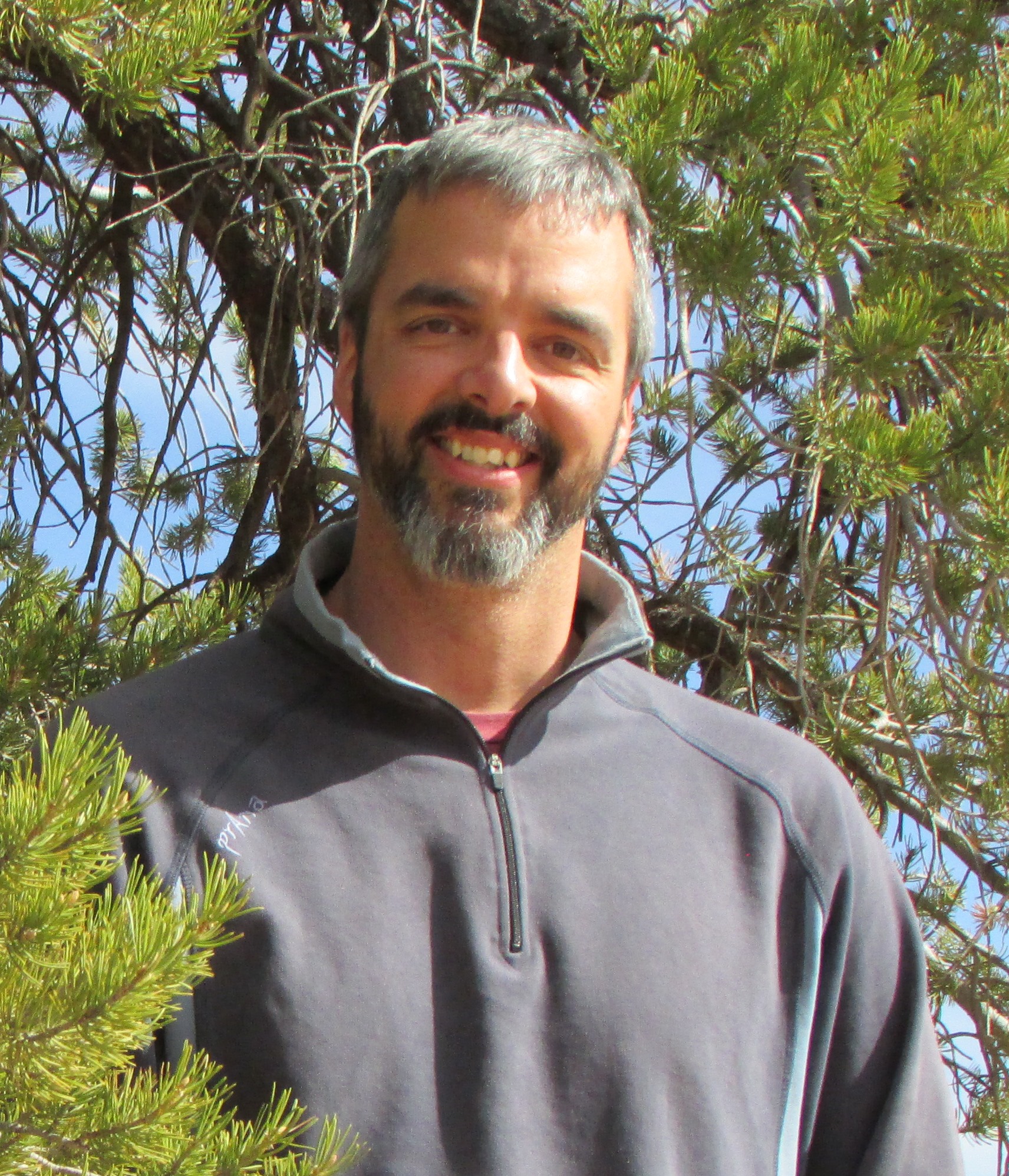 The 2014 Haldane Prize winner is Scott Ferrenberg for his paper Smooth bark surfaces can defend trees against insect attack: resurrecting a ‘slippery’ hypothesis co-authored with Jeffry B. Mitton (Functional Ecology, 28: 837–845).
The 2014 Haldane Prize winner is Scott Ferrenberg for his paper Smooth bark surfaces can defend trees against insect attack: resurrecting a ‘slippery’ hypothesis co-authored with Jeffry B. Mitton (Functional Ecology, 28: 837–845).
The concept of smooth bark on trees and shrubs acting as an anatomical defence against epiphytic vegetation and phytophagous insects has, for some time, fallen out of favour. Ferrenberg and Mitton, in a study of bark beetle attack on Pinus flexilis – a pine species that exhibits both smooth and rough bark surfaces – set out to test the role of bark defence against insects. Their study involved both field surveys and experiments in the Colorado Rocky Mountains, USA. Results were strikingly straightforward: bark beetle attacks were overwhelmingly located on rough bark surfaces and virtually absent from smooth bark. Experimental tests of bark beetles’ ability to grip smooth versus rough bark revealed that bark beetles have difficulty gripping and quickly fell from smooth bark but not from rough bark. They also found that even partial coverage by smooth bark on a tree’s trunk significantly reduced total bark beetle attacks. In short, using a simple but rigorous combination of empirical and observational approaches Ferrenberg and Mitton resurrected the Smooth Bark Defence Hypothesis! Similar to other forms of anti-insect defence, smooth bark also appears to be influenced by plant ontogeny whereby younger trees have greater defences than older trees.
Scott developed an interest in plant-insect interactions at the University of Maryland, College Park, USA where he completed an MSc in entomology with the late Robert Denno. A lifelong fascination with western North America’s conifer forests led him to a research position in Sequoia National Park, California, where he began studies of bark beetle responses to trees injured by prescribed fires. Interest in evolutionary aspects of the bark beetle-conifer system pulled Scott to the University of Colorado, Boulder, where he completed his PhD in 2014 under the guidance of Jeffry Mitton. His time at the University of Colorado allowed his to pursue a wide range of research projects, in addition to his dissertation work on conifers, and he now pursues a diverse set of question in population and community ecology. Scott is currently a postdoctoral scientist at the U.S. Geological Survey’s Canyonlands Research Station in Moab, Utah, where he studies the impacts of climate change on biological soil crust and plant communities.
Winner of the Haldane Prize 2013
Kyle Demes
 The 2013 prize for the best paper by a young author is Kyle Demes for his paper:
The 2013 prize for the best paper by a young author is Kyle Demes for his paper:
Survival of the weakest: increased frond mechanical strength in a wave-swept kelp inhibits self-pruning and increases whole-plant mortality (Functional Ecology, Volume 27, Issue 2: 439-445)
Kyle W. Demes, Jonathan N. Pruitt, Christopher D.G. Harley and Emily Carrington
Survival of the weakest seems an unlikely title for paper in ecology, but this is exactly what Demes et al. found. They studied intra-specific variation in mechanical properties in the kelp species Egregia menziesii in an intertidal habitat and found that weak individuals succeeded. Intertidal habitats (areas between high and low tides) are mechanically among the most stressful in the world, as the hydrodynamic forces to which plants are exposed are considerably larger than wind forces on terrestrial plants. Intriguingly Demes et al. showed that plants benefited from mechanical weakness rather than strength. In weak plants fronds were readily lost under hydrodynamic forces reducing their exposed area and thus the magnitude of the force. Strong plants, on the other hand, held on to their fronds until the build-up of force was so large that the whole plant collapsed. Thus the weak prevailed.
During undergraduate studies at the University of South Florida, Kyle was inspired by the incredible diversity of form and function among seaweeds and has been enamoured with their biology ever since. He completed a M.Sc. at Moss Landing Marine Laboratories in California with Michael Graham, where he examined the relative contributions of shifting environmental factors on sexual vs. asexual reproductive investment in wave-swept kelp. After battling oceanic waves for data collection during his Master’s, Kyle began researching the morphological and mechanical adaptations of seaweeds that allow them to thrive in the wave-swept intertidal, one of the most mechanically hostile habitats on the planet. His PhD, with Chris Harley at the University of British Columbia, focused on integrating mechanical principles into ecological processes. Kyle is now a post-doc at Simon Fraser University, assessing biotic and abiotic control of kelp forest dynamics along the coasts of British Columbia.
Winner of the Haldane Prize 2012
Ulrike Lampe
 The 2012 prize for the best paper by a young author is Ulrike Lampe for her paper:
The 2012 prize for the best paper by a young author is Ulrike Lampe for her paper:
Staying tuned: grasshoppers from noisy roadside habitats produce courtship signals with elevated frequency components (Functional Ecology, Volume 26, Issue 6: 1348-1354)
Ulrike Lampe, Tim Schmoll, Alexandra Franzke and Klaus Reinhold
Germany’s massive Autobahn highways are the last place most biologists want to spend their time. However, as Lampe et al. showed, important biology happens next to these acoustic monstrosities. Generations of grasshoppers have lived out their lives singing amidst the 24-hour noise of these highways. This intense anthropogenic noise has resulted in measurable changes in their songs. Specifically, males increase the frequency of one of the high amplitude frequency components (a local frequency maximum) of their songs. An increase in frequency to circumvent the frequency bandwidth of human-generated noise has also been shown in other taxa, further supporting this phenomenon as a general strategy in bioacoustic systems. While whales, anurans and songbirds have garnered much of the attention in studies of the effects of human-generated noise in bioacoustic systems, few studies have rigorously demonstrated the long-term consequences of anthropogenic noise for invertebrates. Kudos to Lampe et al. for doing research in the acoustic wastelands of our highways and making fascinating discoveries in the process.
Ulrike Lampe finished the Systems Biology of Brain and Behaviour M.Sc. programme at Bielefeld University in 2009. In her master’s thesis she investigated risk-sensitivity in honey bees as a response to variance in reward. Before beginning her PhD studies there in summer 2010, Ulrike continued to work at the Department of Evolutionary Biology in Bielefeld on a small project about sex ratios in Greek bush crickets being dependent on habitat type and hatching date. Her PhD project on the effects of anthropogenic noise on acoustic communication in the bow-winged grasshopper started in July 2010. The project is supervised by Klaus Reinhold and Tim Schmoll. During the summer of 2012, Ulrike worked on experiments to clarify the evolutionary mechanisms behind the elevated frequency maximum in the songs of grasshoppers from roadside habitats. She plans to finish her PhD in summer/autumn 2013 and is currently working on the next chapters of her thesis that will be based on the new results.
Winner of the Haldane Prize 2011
Julia Cooke
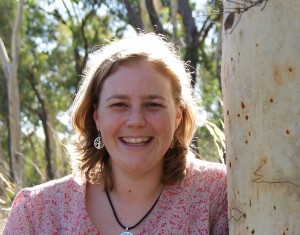 The 2011 prize for the best paper by a young author is Julia Cooke for her paper:
The 2011 prize for the best paper by a young author is Julia Cooke for her paper:
Silicon concentration and leaf longevity: is silicon a player in the leaf dry mass spectrum? (Functional Ecology, Volume 25, Issue 6: 1181-1188.)
Julia Cooke and Michelle Leishman
The paper by Cooke and Leishman addresses the question of whether silicon plays a role in the leaf dry mass spectrum of plants, in which leaf longevity is a fundamental trait. The hypothesis that high silicon concentration prevails in shorter lived leaves and is lower in long lived leaves has previously been applied to grasses, particularly in an agronomic setting, where it is widely recognised that silicon ameliorates numerous biotic and abiotic stresses. By comparison, silicon has been given less attention by plant ecologists.
This work is novel in that it extends investigations to a much wider assortment of plant functional types and phylogenetic groups and finds a negative correlation between silicon content and leaf longevity across this broad range of species. The paper suggests that silicon forms part of the leaf dry mass spectrum and could substitute for carbon allowing a more favourable carbon balance. As such it makes a significant contribution to the argument that the evolution of higher leaf silicon content has been associated with a shift towards shorter leaf longevity and towards a more favourable leaf carbon strategy for short-lived leaves. Finally, the work lays out an exciting area for future research in the functional ecology of silicon, which may be metabolically cheaper, but less versatile than carbon. (Matthew Turnbull, Associate Editor, Functional Ecology)
Listen to Alan Knapp, Editor, Functional Ecology interview Julia about her paper:
Julia Cooke completed a BA/BSc (Hons) at the Australian National University, Canberra in 2003. Her Honours thesis examined the invasion history and ecology of Carrichtera annua (Brassicaceae) a weed of the southern rangelands of Australia. From 2003-06 she worked with Michelle Leishman investigating leaf carbon strategies of invasive species in their native and exotic ranges and the impacts of ecosystem diversity, propagule pressure and nutrient addition on invasion success. Julia completed her PhD in 2011 on the functional ecology of plant silicon at Macquarie University under the supervision of Michelle Leishman. Julia’s research demonstrated that silicon is an important element in plant ecology with complex roles in the leaf dry mass economic spectrum, abiotic stress alleviation, herbivory and biomechanical resistance. The paper in Functional Ecology formed part of her thesis. She is currently a post-doctoral fellow at Macquarie University with Ian Wright and Mark Westoby, working on scaling functional traits to whole plant growth. Julia is also the author of a children’s book that focuses on the natural history of Black Mountain in Canberra, Australia. Julia Cooke’s website
Winner of the Haldane Prize 2010
Cécile Albert
 The 2010 prize for the best paper by a young author is awarded to Cécile Albert for her paper:
The 2010 prize for the best paper by a young author is awarded to Cécile Albert for her paper:
A multi-trait approach reveals the structure and the relative importance of intra- vs. interspecific variability in plant traits (Functional Ecology, Volume 24, Issue 6, Pages 1192-1201)
Cécile Hélène Albert, Wilfried Thuiller, Nigel Gilles Yoccoz, Rolland Douzet, Serge Aubert and Sandra Lavorel
Recent years have seen an explosive growth in measurement of plant traits, spurred on by the recognition that plant function is more important than plant identity, and that wholly unrelated plants can have very similar traits. Traits are now used to study the fundamental constraints on plant evolution, to understand ecosystem function and to explain community assembly. Implicit in nearly all this work has been the belief (maybe ‘hope’ is a better word) that variation in traits within species is negligible compared to variation between species, and specifically that worthwhile results can be obtained by using mean species values (often extracted from published databases). Cécile Albert and her co-authors tested this assumption through an extremely detailed study of traits of 13 common species in the French Alps. The work involved much painstaking field sampling and great care was also taken in the analysis and presentation of the results; helpful figures show trait variation between species, populations and individuals, and also how likely you are to mistake the leaves of one species for another, based on its trait values.
For those busily engaged in measuring and interpreting plant traits, Cécile’s findings provide both good and bad news. Most trait variation (about 70 % on average) is found between species, and major axes of trait variation are robust to variation within species. On the other hand, variation within species is far from negligible, and for some traits, and some purposes, one could be led into error through unquestioning use of species’ mean values. Referees described this paper as ‘extremely interesting’ and thought it asked questions that were ‘interesting, timely, important and well tested’; one thought it was ‘one of the more important papers that I have read in quite a while’, and I wouldn’t disagree at all. A worthy winner with a message that deserves to be carefully digested by anyone engaged in plant trait research. (Ken Thompson, Editor, Functional Ecology)
Cécile Albert entered the École Polytechnique (Paris, France) a famous French engineering school in 2002. In 2006, she received her MSc in Theoretical ecology and modelling from the Institut National d’Agronomie Paris-Grignon (Paris, France). She obtained her PhD degree in 2009 on quantifying intraspecific functional trait variability, disentangling its relative importance compared to interspecific variability and testing its impact on functional diversity indices under the supervision of Wilfried Thuiller and Sandra Lavorel at the Laboratory of Alpine Ecology (LECA, CNRS-Univ. J. Fourier, Grenoble, France). Cécile is currently a postdoctoral fellow at McGill University (Montréal, Canada) in collaboration with Andrew Gonzalez. She is working at the interface between functional ecology, plant ecology, community ecology, biogeography and ecological modelling.
Winner of the Haldane Prize 2009
Cassie Majetic
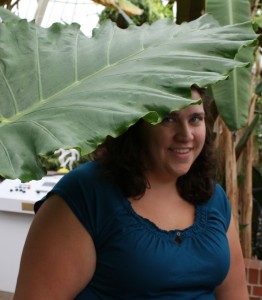 The editors are pleased to announce the winner of the Haldane Prize for the best paper by a young investigator published in Functional Ecology during 2009 is Cassie Majetic for her paper:
The editors are pleased to announce the winner of the Haldane Prize for the best paper by a young investigator published in Functional Ecology during 2009 is Cassie Majetic for her paper:
The sweet smell of success: floral scent affects pollinator attraction and seed fitness in Hesperis matronalis (Functional Ecology Volume 23, Issue 3, Date: June 2009, Pages: 480-487)
Cassie J. Majetic, Robert A. Raguso, Tia-Lynn Ashman
In her paper, Cassie Majetic and co-authors make an important contribution to an emerging area of study, namely the ecology and evolution of floral scent.
Biologists are used to evaluating adaptations by describing how variation in form affects function, but the investigation of floral scent is adding a new chapter to the catalogue of floral adaptations. Here, Majetic et al. have embarked on an ambitious programme to dissect the functional significance of floral scent in insect-pollinated Hesperis matronalis (Brassiciaceae) by complementary manipulative experiments. This species attracts pollinators during both day and night – different types, of course – and the interest is in finding out the importance of these two temporally separate processes. The design is elegant and techniques ingenious; in their study, diurnal and nocturnal scents are separated and augmented – to achieve this, modern technology is deployed along with artificial scent emitters that are the product of traditional ecologist’s tinkering (using coffee filters and, almost certainly, duct tape) – and diurnal and nocturnal pollinators are separately excluded, before seed set is measured. Impressively, these causal components are allowed to reassemble in an open field experiment.
After rigorous and adept statistical treatment, the picture that emerges is nevertheless complex and, in some ways, perplexing – the manipulative experiments suggest that variation among individual plants affects fitness primarily by influencing diurnal pollinators, whereas the responses of nocturnal pollinators determine variation in seed set in the open field experiments. Notwithstanding, Majetic et al. provide a cogent summary of the key import of their findings, while nevertheless pointing out some ecological tangles. Senior ecologists seeking a stylistically model paper for PhD students coping with writing up that ‘difficult data set’ would do well to recommend Majetic et al. Finally, I expect that this paper will have significant impact – resolving these complexities will keep the scientists busy here and inspire others to look into related issues in new study systems. Overall, a deserved award to a paper that deserves a read. (James Cresswell, former Editor, Functional Ecology)
Cassie Majetic received her BS from Allegheny College (Meadville, Pennsylvania, USA) in 2002, majoring in Biology. In 2008, she graduated from the Department of Biological Sciences’ Ecology and Evolution program at the University of Pittsburgh (Pittsburgh, Pennsylvania, USA). Following graduation, she returned to Allegheny College’s Department of Biology, where she spent last year as a visiting assistant professor. Cassie is currently in her first year as an assistant professor in the Department of Biology at Saint Mary’s College, a liberal arts women’s college in Notre Dame, Indiana, where she teaches evolution, environmental biology, and several botanical courses. Her research continues to focus on the biochemical connections between floral scent and floral colour, the ecological implications of scent on pollination biology, and the evolutionary trajectory of floral scent in a number of plant species.
Winner of the Haldane Prize 2008
Carol Sparling
 The 2008 Haldane prize for the best paper published by a new researcher in Functional Ecology has been awarded to Carol Sparling for her paper: “Estimating field metabolic rates of pinnipeds: doubly labelled water gets the seal of approval” (Functional Ecology, Volume 22, Issue 2, Pages: 245-254)
The 2008 Haldane prize for the best paper published by a new researcher in Functional Ecology has been awarded to Carol Sparling for her paper: “Estimating field metabolic rates of pinnipeds: doubly labelled water gets the seal of approval” (Functional Ecology, Volume 22, Issue 2, Pages: 245-254)
C. E. Sparling, D. Thompson, M. A. Fedak, S. L. Gallon, J. R. Speakman
In this study Sparling et al compared 32 metabolic rate measurements using both indirect calorimetry and the doubly labeled water (DLW) method in 9 individual grey seals. The study took 3 years of lab work and many people hours to complete. Measurements were carried out in a one of a kind large sea water pool that allowed the animals to swim and dive much like they would in the wild. Furthermore, their study was quite rigorous and took into account the important components that could cause errors in the method, including changes in body mass, analytical error as well as potential errors in determination of water space. The end result is one of the most complete validations of the DLW method yet accomplished. While this work is important to the marine mammal research community it has relevance to anyone interested in completing field metabolic rate measurements on large vertebrates.
Carol studied Zoology at Aberdeen University before moving to the Sea Mammal Research Unit at the University of St Andrews to carry out her doctoral research with Professor Mike Fedak, obtaining her PhD in 2003. She continued her postdoctoral research at St Andrews until 2007 and conducted the research for her paper during this time. She still maintains her seal research at the Unit on a part-time basis.
Carol is also currently working as a senior ecologist with a private consultancy, working with government agencies, conservation bodies and private developers on various projects throughout the UK and Eire in the fields of ecological restoration, habitat management and wildlife management.
Like what we stand for?
Support our mission and help develop the next generation of ecologists by donating to the British Ecological Society.